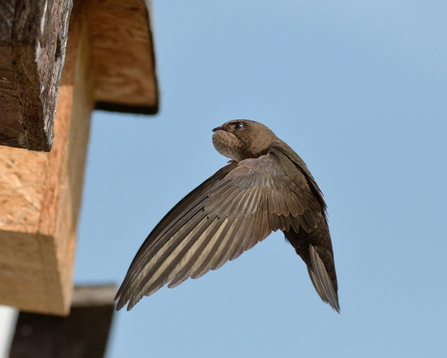
Common swift flying to a nest box by Nick Upton
A child holding a young froglet. Picture: Ross Hoddinott/ 2020Vision

Common swift flying to a nest box by Nick Upton
Most swifts will have left by now, heading back to Africa for overwintering and covering thousands of miles during their migration. Swift boxes do not need maintenance, as nesting material is very minimal.
Any grounded swift, house martin, or swallow must be picked up and checked by a qualified rehabber, as these birds will not be found on the ground unless injured - or collecting mud in the case of house martins and swallows.
For a list of rehabbers, please visit the sites below:
Insects feeding on ivy flowers. Photo by Sue Taylor
Autumn-flowering crocus and ivy are great late flowering plants for pollinators, and will provide much needed nectar sources before the cold season and hibernation.

A child holding a young froglet. Picture: Ross Hoddinott/ 2020Vision
New froglets will start now to emerge from water; take care when mowing the lawn, always check grass beforehand. Provide an escape route from bowls and baths as froglets will find it hard to climb out and will be at danger of drowning – unfortunately frogs do drown.